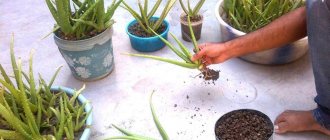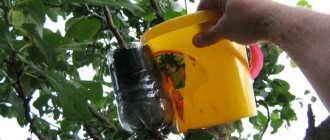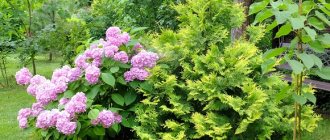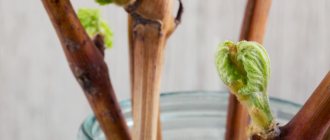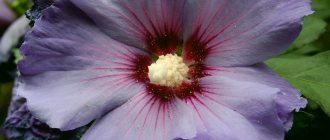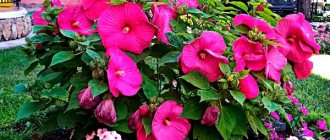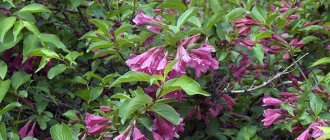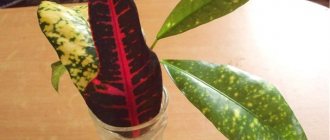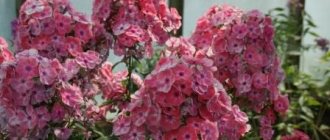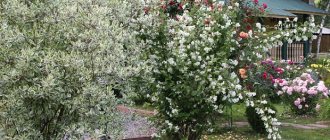How to grow at home?
You need to be careful when choosing a location: hibiscus needs good lighting and protection from the sun . Drafts are unacceptable - the plant cannot tolerate them.
The optimal temperature is 12 -16 degrees, not lower than 10 degrees in winter. Hibiscus requires abundant watering in summer, moderate in autumn, and limited in winter. In summer, it is recommended to spray and fertilize from March until September inclusive.
Do not overdry the earthen ball in the pot, otherwise the leaves may fall, loss of buds and lack of flowering in the future.
Substrate preparation
We figured out how to root indoor hibiscus cuttings. Next, let's move on to preparing the soil in which the flower will grow constantly. It would be good to purchase a special composition for citrus crops and add a little sand and vermiculite to it. You can prepare the substrate yourself. For this purpose, you need to take: three parts each of leaf and turf soil, one each of humus, charcoal and sand. If these proportions are observed, hibiscus usually develop well, get sick less and live long.
The Chinese rose also feels most comfortable in peat soil. Experienced gardeners advise adding sphagnum moss to it to regulate humidity.
Reproduction at home
To propagate Chinese roses use:
- seeds;
- cuttings;
- dividing the bush;
- layering.
Propagation by seeds
After the plant's bud withers, seeds appear. To grow hibiscus from seeds, they require preliminary preparation for sowing. You need to pour water into a container, add a root formation stimulator and soak the seeds for 12 hours. After this, rinse them, degrease them in a weak solution of potassium permanganate, place them in a damp cloth and leave them in a warm place.
After the sprouts appear, moisten them with water and ventilate. Plants planted in pots quickly produce new shoots. It begins to bloom after 3 years; with this method, the properties inherent in the original species are not always preserved.
How to grow from cuttings?
Decorative hibiscus is distinguished by a variety of colors; they reproduce easily if certain conditions are met. When propagating by cuttings, it is necessary to properly root the cutting from the plant you like. When choosing petioles, remember that it must have at least two internodes.
To root cuttings, you can use several methods:
- cut the cutting in February, place it in damp sand for rooting (to speed up the rooting process, you can cover the container with the cutting with plastic wrap ), the plant should be kept at a temperature of 22-24 degrees for up to 2 months;
- cut a branch and place it in water until roots form.
For proper rooting of cuttings you need:
- a small container made of plastic or glass;
- peat tablet;
- ready-made drainage (expanded clay);
- a drug to accelerate root formation;
- glass or polyethylene film;
- soil loosening agent (vermiculite).
The peat tablet should be filled with water, the stalk should be carefully cut, slightly dried and powdered with Kornevin. After taking the tablet form, squeeze it slightly, add vermiculite and mix.
Place drainage at the bottom of the container, pour in the resulting soil, place the cutting 2 cm deep. Cover the container with glass or plastic wrap and place in a well-lit place. Water when the soil dries out, ventilate occasionally (every two weeks).
After about 2.5 months, the roots will appear; after they have become stronger, you can transplant the plant into a pot and continue to care for it as if it were an adult.
Usually a young plant produces buds quickly. This may not happen because the plant does not have enough strength yet. The first flowers will certainly appear after the plant reaches 30 cm. Throughout the summer, hibiscus grows actively. By cutting a cutting in October, you can get a flowering plant by summer.
Rooting Chinese rose cuttings in water
Cut branches are placed in water, adding a growth stimulant (to speed up the formation of roots). It is necessary to periodically add water as it evaporates. The appearance of roots takes a long time; after they have formed in sufficient quantities, the plant is transferred to a pot with prepared soil.
How to plant a Chinese rose with shoots?
Stem shoots are used for propagation of hibiscus; especially in summer, their rooting occurs quickly and easily. To do this you should:
- choose a stem 0.5 cm wide;
- cut off the top at a distance of 15 cm, remove the lower leaves;
- plant in a container for rooting;
- place in a well-lit place;
- water as needed.
Varieties
Science knows many species and varieties of this beautiful plant, however, only a few of them are usually grown in open ground conditions in Russia:
- Syrian;
- trifoliate;
- hybrid.
Below are the features of these types.
Syrian
This is the most suitable hibiscus for our climate, since it is quite frost-resistant. His homeland is not Syria, as you might think, but China.
Under natural conditions, Syrian hibiscus reaches 5 meters, but when cultivated - only 3 meters. It is usually cultivated as a small tree. The plant is decorated with elongated dissected leaves and large flowers, reaching a diameter of 6-12 cm.
Trifoliate
Has African origin. Reaches 80 cm in height, characterized by a taproot system and straight, elongated branches. The name comes from the type of foliage - the leaves are divided into three parts.
The flowers are small, reaching only 4 cm in diameter. However, due to their number and external effectiveness, the shrub looks very picturesque. The color of the petals is yellowish, the core is red. Flowers bloom only in the morning.
Hybrid
It was bred artificially by crossing swamp hibiscus, red and holly. It is distinguished by its long life and very beautiful, bright and large flowers.
Graft
For vaccinations to be successful, you should consider:
- use a young Chinese rose plant to graft cuttings;
- graft into the crown of the plant;
- there should not be more than 5 scions on one bush;
- It is recommended to vaccinate in the first summer months.
Grafted plants need to be carefully looked after, provided with a well-lit place and provided with regular feeding.
In winter, grafted hibiscus require additional lighting (about 6 hours per day) so that the grafts do not die off.
The use of grafting allows you to obtain several varieties on one plant.
Sprout care
Growing the plant
After a few days, the seeds will hatch and small sprouts will appear. The mini-greenhouse needs to be ventilated every day, and the sprouts should be sprayed with warm water. Maintain the temperature at 22–27 degrees. As soon as 2-3 leaves appear, the plants need to be planted in small pots. Take soil consisting of humus and turf soil in equal proportions. A commercial mixture for seedlings, which consists of peat with the addition of sand and ash, is also suitable. Seedlings need to be shed with a solution of foundation in order to avoid fungal disease - “black leg”. It is important to maintain moderate watering and diffused light.
Key rules for breeding exotic flowers
You need to know how Chinese roses reproduce in order to get a healthy plant at home. Hibiscus grown from seeds will bloom in 3–4 years. The plant must be replanted every year until it matures.
Saplings
Garden hibiscus is propagated by bending the lower shoot to the ground in the spring, covering it with earth and pinning it. The soil should be moistened for a month until roots appear. Rooted seedlings can be transplanted in the fall or next year in the spring.
With sufficient heat and lighting, the seedlings begin to grow actively and bloom by the end of summer. requires pruning to stimulate growth and flowering .
When choosing a propagation method, you should remember that cuttings are considered optimal. Plants obtained from seeds will not bloom soon.
A beautiful and useful garden inhabitant
Typological features of the plant include:
- large double, semi-double flowers, reaching a diameter of 20 cm;
- petiolate leaves with serrated edges;
- bright color of the corolla;
- the fruit is a five-leaf capsule filled with small seeds.
Pan-Asian countries are considered the birthplace of hibiscus. In this regard, the plant received its second name - Chinese rose. Like other mallow Chinese roses:
- moisture-loving;
- sun-loving;
- prefer light, sandy soils;
- need nitrogen and phosphorus baits.
It is worth noting that hibiscus flowers and leaves have medicinal properties. A decoction of the buds is used to treat patients with dysentery, hemorrhoids, inflammatory diseases, and stomach ulcers. Acidic enzymes contained in the petals stimulate the production of bile and the removal of poisons from the body. Decoctions based on dried buds and alcohol lotions from corollas soothe inflamed skin, reduce irritation and help prevent acne.
Hibiscus tea is long tea with the addition of Sudanese rose petals (a type of garden hibiscus), which stimulates appetite, lowers blood pressure and is an effective immunomodulator.
The collection of inflorescences is carried out during the active growing season - from May to October. During drying, the buds are not disassembled into petals, but placed in a shaded, well-ventilated place. Decoctions of hibiscus are used to rinse hair, wipe the skin of the face and neck, and also fill healing phyto-baths.
Photo
See more photos of hibiscus below:
Types and varieties of garden hibiscus
Garden hibiscus is represented mainly by varieties of Syrian hibiscus, but other plant species, as well as their varieties, are also grown in cultivation.
Syrian hibiscus (Hibiscus syriacus)
Surprisingly, it comes from China, not Syria. In nature, plants of this species reach a height of 5-6 meters and are deciduous shrubs with bright green ovate leaves about 10 cm long and single flowers of different colors. In addition to hibiscus with simple flowers, double hibiscus is grown in culture, and the form of the plant can be either bush or standard. Of the popular varieties, the most interesting are:
- Diana is a shrub up to 2 m high with white flowers with a diameter of about 12 cm, wavy along the edge of the petals;
- Vayelit Ilar Double is a very powerful upright growing bush with double or semi-double flowers of a violet-blue hue with red spots in the middle;
- Pink Giant - a bush with single pink flowers with a purple spot at the base of the petals;
- Carneus Plenus is a shrub with flexible shoots and double pale pink flowers with a purple spot in the middle.
In the photo: Syrian hibiscus (Hibiscus syriacus)
Trifoliate hibiscus (Hibiscus trionum)
The species is native to central and northern Africa, although today it is widely grown in all areas of irrigated agriculture. The root of this plant is taproot, the stem is straight, branched, up to 80 cm high. The leaves are tripartite, petiolate, alternate, with pubescence. The flowers are yellowish, up to 4 cm in diameter, with a dark red center.
A peculiarity of the species is that the flowers open in the morning for only a few hours, and close in the afternoon.
Flowering of plants of this species lasts more than a month, because a new hibiscus bud is formed in the axil of each leaf, and if optimal conditions are created for hibiscus trifoliata, new flowers will appear daily.
In the photo: Trifoliate hibiscus (Hibiscus trionum)
Hybrid hibiscus (Hibiscus hybrida)
In addition to these two species, which grow both in the wild and in cultivation, hybrid hibiscus and its varieties are grown as garden plants. As already mentioned, this hybrid was developed by crossing three North American species - holly (armed), bright red and swamp hibiscus. Hybrid hibiscus are herbaceous perennials that are distinguished by spectacular and very large flowers. The best varieties:
- Youth is a bush up to one and a half meters high, weakly branched, stems of a light yellow-green hue, from which shoots extend at an angle of 60º. The leaves are also yellow-green, three- or five-cut. Pink flowers with a white bottom and cup, up to 10 cm in diameter, have the shape of a tulip;
- Late is a compact bush of approximately a meter in height and the same diameter, densely leafy with jagged, oval-arrow-shaped leaves with light veins on thick petioles. The flowers, raspberry-pink with a lilac tint, in the shape of narrow bells up to 7 cm in diameter, open on short thick peduncles;
In the photo: Hybrid hibiscus (Hibiscus hybrida)
- Pale pink - a herbaceous bush up to 170 cm high with short shoots extending at an angle of 60º from the branches, with three-cut yellow-green leaves with a serrated edge and tulip-shaped pink flowers up to 12 cm in diameter with a white bottom and bowl;
- Pink-porcelain - bush up to 130 cm, branched stems, yellow-green, leaves deeply cut with a wide, protruding middle lobe, dusty yellow-green, on petioles up to 6 cm long. Large bell-shaped light pink flowers with a barely noticeable yellowness and a white throat, up to 12 cm in diameter, sit in bunches on short peduncles.
